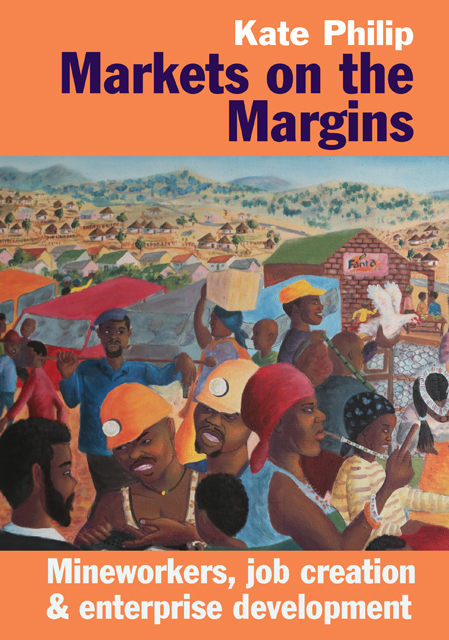Book contents
- Frontmatter
- Contents
- List of Illustrations
- Preface
- Acknowledgements
- Abbreviations
- 1 Introduction: Setting the scene
- 2 The 1987 Mineworkers Strike
- 3 Conflict in the Transkei
- 4 Power Struggles in Lesotho
- 5 Co-ops Capture the Imagination
- 6 The NUM Co-op Programme
- 7 Challenges of Democratic Ownership & Control
- 8 Rethinking Degeneration in Co-op Theory
- 9 The Mineworkers Development Agency’s Development Centre Strategy
- 10 Small Enterprise: In the shadow of the core economy
- 11 A New Enterprise Development Paradigm
- 12 Market Development – or a New ‘Anti-Politics Machine’?
- 13 Breaking into Higher-value Markets in the Craft Sector
- 14 Marula: Product innovation & value chains
- 15 Implications for Enterprise Development Strategy
- 16 If Markets are Social Constructs, how Might we Construct them Differently?
- Select Bibliography
- Index
3 - Conflict in the Transkei
Published online by Cambridge University Press: 20 January 2023
- Frontmatter
- Contents
- List of Illustrations
- Preface
- Acknowledgements
- Abbreviations
- 1 Introduction: Setting the scene
- 2 The 1987 Mineworkers Strike
- 3 Conflict in the Transkei
- 4 Power Struggles in Lesotho
- 5 Co-ops Capture the Imagination
- 6 The NUM Co-op Programme
- 7 Challenges of Democratic Ownership & Control
- 8 Rethinking Degeneration in Co-op Theory
- 9 The Mineworkers Development Agency’s Development Centre Strategy
- 10 Small Enterprise: In the shadow of the core economy
- 11 A New Enterprise Development Paradigm
- 12 Market Development – or a New ‘Anti-Politics Machine’?
- 13 Breaking into Higher-value Markets in the Craft Sector
- 14 Marula: Product innovation & value chains
- 15 Implications for Enterprise Development Strategy
- 16 If Markets are Social Constructs, how Might we Construct them Differently?
- Select Bibliography
- Index
Summary
In the aftermath of the 1987 Mineworkers Strike, some forty thousand workers were dismissed and sent home. A large cohort of these was from the Transkei bantustan, in what is now the Eastern Cape. Many were from Pondoland on what is known as the Wild Coast, with its steeply rolling hills, indigenous forests and ragged coastline. Despite its natural beauty, this was then and still is one of the poorest places in South Africa, deeply dependent on incomes from migrant labour, and one of the areas hardest hit by job losses in the 1987 strike. Little did we know at the time that this was just the start of a decade-long period in which the mines would haemorrhage more than three hundred thousand jobs.
For the men sent home on the buses, the transition from a trade union battleground to a very different terrain of struggle in labour-sending areas across southern Africa was a significant rupture. The considerable power that arose from collective action on the mines did not translate into any equivalent form of power for ex-miners suddenly dispersed onto the outskirts of the economy, nor did the strategies used on the mines have any traction in facing down the competitive market pressures soon to confront them in the co-ops and other forms of enterprise.
So, while there was a political continuity of purpose, this could not be translated into a continuity of practice. Yet the early patterns of action saw the ex-miners attempting to create just such continuities in both their organisational structures and strategies. Nowhere was this more evident than in the Transkei.
Two of the main protagonists – and antagonists – amongst the exmineworkers in the Transkei were Elliot Nomazele Bhala and Sipho Nqwelo. Bhala, who had been the Chair of NUM’s notoriously violent Randfontein Estates Mine in Westonaria, took the reins of leadership amongst ex-miners in the Eastern Cape.
Randfontein Estates Mine was notorious for an incident in 1986, during which mineworkers had paid a sangoma (traditional healer) for muti (traditional medicine) to make them invincible. In particular, the sangoma promised it would make police bullets turn to water.
- Type
- Chapter
- Information
- Markets on the MarginsMineworkers, Job Creation and Enterprise Development, pp. 24 - 34Publisher: Boydell & BrewerPrint publication year: 2018

